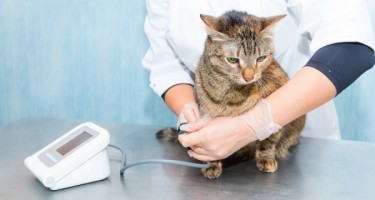Why we measure blood pressure
We may measure a pet’s blood pressure to check for conditions which could affect their health and wellbeing. Blood pressure refers to the force exerted by the circulating blood on the walls of the blood vessels. Measuring blood pressure is a common procedure in human healthcare, and in pets the technique allows us to determine if your pet is suffering from a blood pressure abnormality.
With pets, their blood pressure is measured by using a small Doppler ultrasound probe, which uses the ultrasonic waves to detect the pulse pressure. It’s important that your pet is as calm as possible, so we will often measure your pet’s blood pressure in a quiet room. If a procedure is required, we will explain more about what’s involved for your pet. Often several blood pressure measurements will be recorded to gain an accurate assessment.
High and low blood pressure
High blood pressure, or hypertension, in pets is usually caused by an underlying disease. Various metabolic conditions can cause high blood pressure, such as diseases of the kidneys, adrenal glands, thyroid glands and conditions like diabetes. High blood pressure can also cause further complications, affecting your pet’s eyesight, heart and kidneys.
Low blood pressure, or hypotension in pets, occurs when there is a reduced amount of blood being pumped around the body, or if other cardiovascular problems are present. Causes of low blood pressure include heart disease, some metabolic conditions, injuries involving bleeding, some toxicities and also shock. Animals with low blood pressure may be weak and lethargic, as a result of inadequate blood supply to their critical organs.
We will be able to advise you further about whether checking your pet’s blood pressure is worthwhile. We will then also be able to explain the findings, discuss what may be causing the problems and lay out what treatment options might be available.

